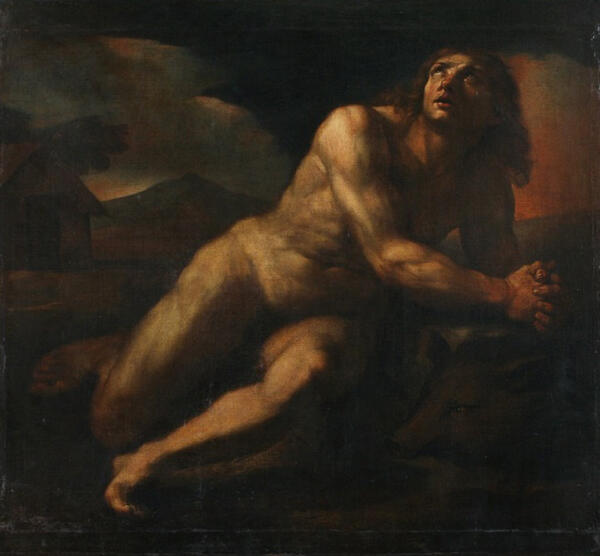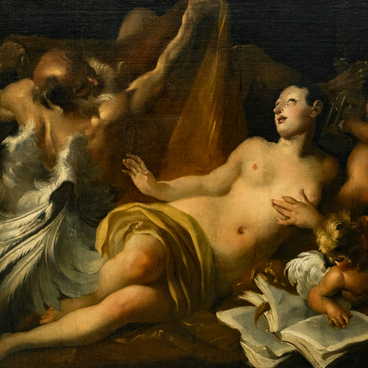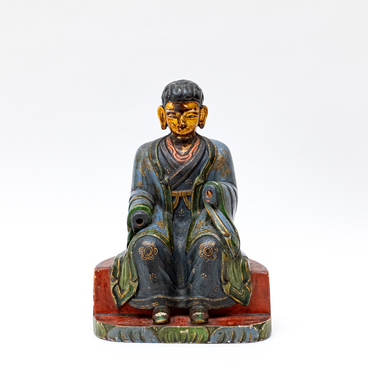The collection of the Sakha Republic National Art Museum includes a painting by an unknown Italian artist, which dates back to the 17th century.
The painting as part of Professor Mikhail Fedorovich Gabyshev’s collection of Western European art of the 16th–19th centuries entered the museum under the title “Hercules and the Erymanthian Boar” and was attributed to the Neapolitan artist Luca Giordano (1632–1705), but this attribution was doubtful. The great demand for Giordano’s works pushed market buyers to arbitrarily assign the well-known name to the paintings of other artists. The artwork from the museum’s collection, attributed by external signs to the famous artist, did not escape this either. However, the question of its true creator is still open.
The artwork is executed in the Baroque style. The painting features a person’s figure in full lengths with a typically Baroque composition developing diagonally. It is built on enlarged, dynamic rhythms, with poses and gestures that are both affective and complex. The lighting harmonizes with the plastic form and conforms to the overall dramatic atmosphere of the painting. The landscape background is also full of life — in the painting’s brownish color scheme, the darker foreground is effectively enhanced by flashes of lightning.
As for the plot, upon careful consideration, the image of Hercules raises doubts and provides food for thought. According to the title under which the painting entered the museum’s collection, the artist depicted the fourth labor of Hercules, but the peacefully lying pig does not resemble a ferocious boar with huge fangs, which terrified the entire neighborhood. The character, bearing a resemblance to the Greek hero, does not correspond to the heroic spirit of the ancient myth with his mystical appeal to heaven. On the left in the landscape is a small building — a house or a cattle pen. According to the myth, Hercules caught up with a boar stuck in the snow in a deserted place on the top of Mount Erymanthos, but there is no snow in the image; the landscape looks like a plain bordered by mountains and a volcano.
On the other hand, a figure described in the New
Testament corresponds much more closely to the image. The parable of the
Prodigal Son tells of a young man who, after receiving his inheritance from his
father, squandered it in distant lands. When he found himself in need of
sustenance, his friends turned away from him. He began to herd pigs and, in
desperation, was glad to eat their food. The Prodigal Son repented and called
out to God. He returned to his father, who forgave his son and accepted him as
“reborn.” Thus, the plot of the presented painting is interpreted as “The
Conversion of the Prodigal Son.”



